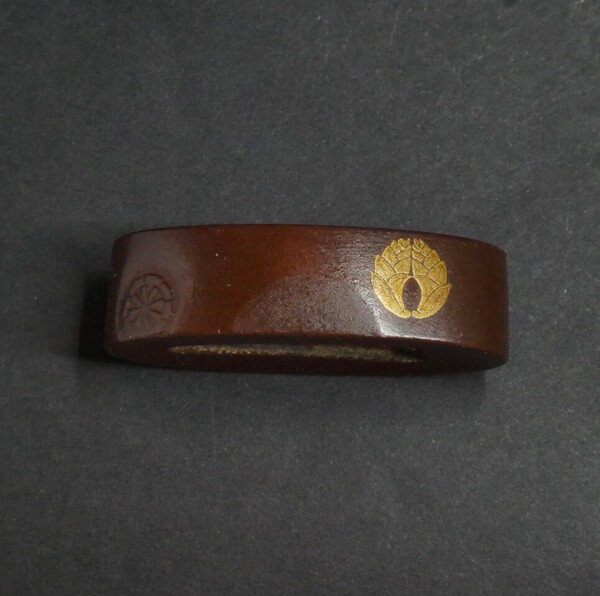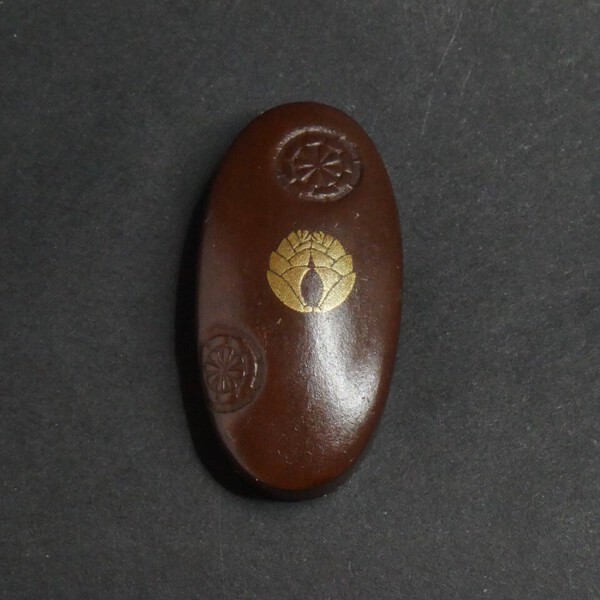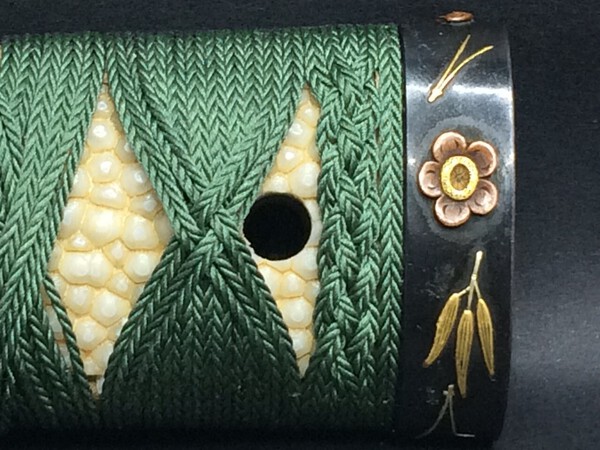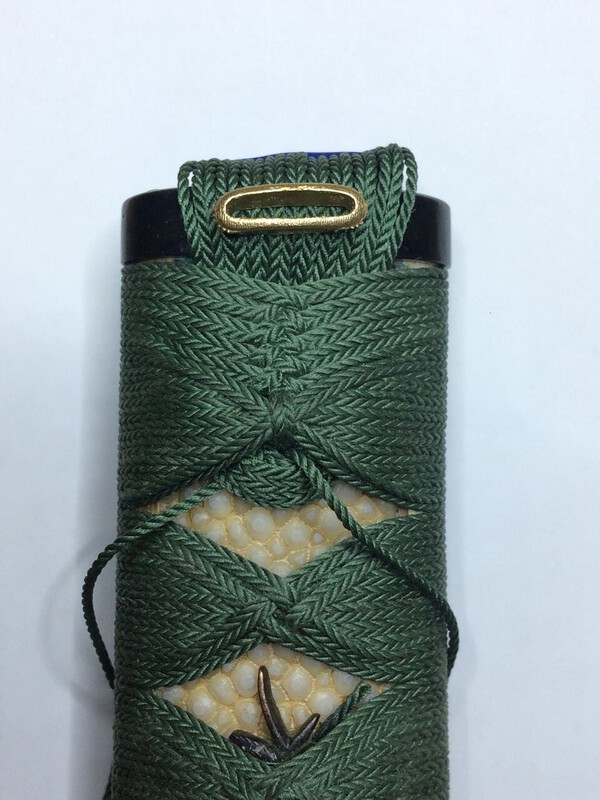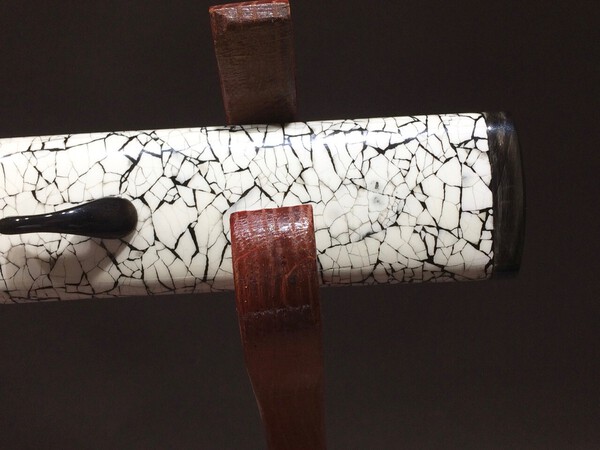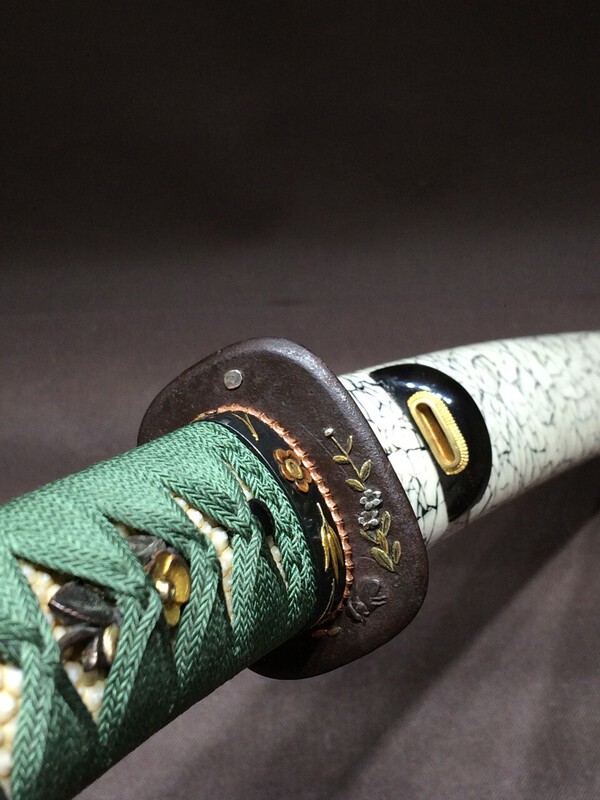-
Posts
227 -
Joined
-
Last visited
-
Days Won
4
Everything posted by Artur DrogaMiecza
-
Thank You.
-
Of course, I understand and I did not want to offend anyone, I took it seriously but also fun at the same time. I keep my distance from comments and I didn't expect tsuba to be ok. I also wanted to understand a bit why someone broke a pretty nice tsuba, as Vajo noticed.
-
YES, exactly.
-
I am very beginner. The longer I am interested, the less I know. I spend most of my time learning koshirae techniques, so forgive my immaturity in the topic of tsuba. Thanks a lot for Your opinion.
-
Thank you for your opinion on such an expert level. I didn't imagine it was a forum for painters. No offense. We're having fun...
-
Hello, I would like to ask experienced colleagues for a general opinion on this tsuba. It is known that the photos do not reflect the full feeling. Could this be an authentic Hamano Tsuba? I received several negative votes. The argument: "You didn't pay 10K for this". Anyway, I like it. Please click the photo for more HD pictures.
-

The Fuchi/Kashira Orphanage
Artur DrogaMiecza replied to Nihontocollector19's topic in Fittings/Tosogu/Kodogu/Koshirae
-
Brian, I'd really like to try my hand at it. This year, unfortunately, I had too many personal problems to worry about and my right arm stopped working for 3-4 months. The second thing is that I'm a bit limited by not knowing how to go about it. I will complete my current projects and spend more time on this. I will definitely turn to you for tips / help. I will be obligated for your help.
-
Hello, I wanted to show the last project. The order was for tsukamaki. However, after unwrapping the old braid, SAME was found to be in poor condition. I peeled off and cleaned SAME and then stained it using the traditional method. It was not the end of worries. The new fuchi and kashira needed a new spigot to make the fitter solid. On this occasion, I tried a new way to integrate new wood into the current wood. The wedge-shaped and additional 2 pins for this work gave a good effect. It shouldn't fall apart. Previously, I made flat inserts with 2 pins but I believe that the wedge will hold better if the tsuka was to be used for training. About tsukamaki. I learn something new every time. Currently, I plan to focus even more on shaping the washi paper under the braid. I believe my next tsuka will be even better. Thank You for watching. More photos and video here: https://www.flickr.com/photos/artur_drogamiecza/albums/72157717440581412
- 11 replies
-
- 15
-

-

-

The Fuchi/Kashira Orphanage
Artur DrogaMiecza replied to Nihontocollector19's topic in Fittings/Tosogu/Kodogu/Koshirae
Hello, I enclose a link to my fuchi photos. It would be nice to find a good kashira match. https://www.flickr.com/photos/189643573@N05/albums/72157716713521893 -
Hello, This set will never cease to amaze me. It looks like a suaka ... Exactly. But when I took it, it turned out to weigh 4 times less. Later, thanks to Japanese Tsukamakishi help, I determined that it was probably urushi + tonoko, formed on a thin copper plate. If you have encountered such sets, please contact me. From a practical point of view - not practical at all, but if the sword was to be light, then maybe it changes the sense of using this material. Have you encountered this type of tosogu?
-
- 3
-

-
Brian, thank you so much for the kind words. I was thinking about trying to show my work in Japanese shinsa / other competitions but so far I don't know how to organize it + translations + applications. I need to be more interested in it, but I am also willing to use the help of someone experienced. Currently I have 4 pending projects that I plan to complete in about 60 days. I would love to see your project and let's talk.
-
Hello, I would like to present my newest Tanto Koshirae. Saya. Working with the shells turned out to be very laborious. I used eggs from the village with a fairly thick shell. It is important to peel off the inner film after boiling, which is best to come off wet. The application lasted about 4 days. Then, filling small gaps and lacquering. During sanding, be careful not to take too much ... Tsuka. Samegawa dyed in the process of 2 natural dyes, which I received from a Japanese professional Tsukamakishi. Tsukamaki. The first time I did a 10-pair braid. The difficulty with more pairs is keeping straight lines on the center of the hishi in the cross section. Therefore, I decided to make the middle part of hishi - using the hineri-maki method. This in turn causes the cross section to be raised and the need for more hishigami / komekami ... The braid is a bit taller / protruding, but it gives a good depth. The braid is fully stitched so the threads do not slip and are tightly stretched. Used jabara is 0,85 mm diameter. My dream is to make a 12-pair braid. However, I can't find the right thickness for the jabaraito anywhere, it has to be about 0.65mm thinner. I used honoki wood. Saya fittings. Koiguchi of copper, rest of buffalo horn. Seppa with filing big teeth of copper. Keep fingers crossed for next better project.
- 15 replies
-
- 15
-

-







